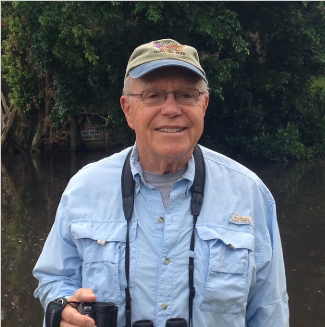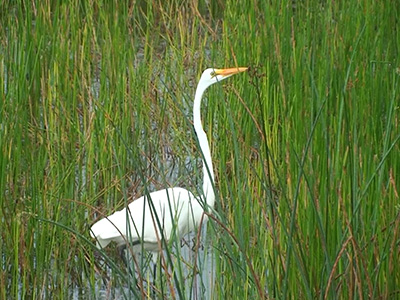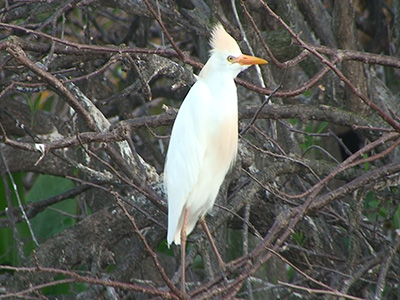As ophthalmologists, we have spent much of our careers looking through lenses in the office and the operating room. And I suspect we have all shared the sense of awe as we beheld the exquisite beauty and intricacy of the human eye.
The thousands of examinations that each of us have performed over the years have not only given us a respect for the elegance of nature, but has sharpened our ability and inclination to appreciate the subtlest aspects of all that we see. It is not surprising, therefore, that many of us have adopted hobbies or avocations that incorporate a careful examination and appreciation of the diverse marvels throughout this world in which we live. An excellent example is our colleague, Richard K. Forster, MD, who has spent countless hours looking through the lens of his camera at the wading birds and shorebirds of Florida.

Robert K. Forster, MD
Dr. Forster’s love of nature began at an early age. Growing up on a small poultry farm in New Hampshire, he spent many hours in the woods and fields of his family’s 68 acres, enjoying the wildlife that included a variety of birds: chickadees, nuthatches, blue jays, crows and occasional pheasants. In 1949, he won a trip to the Eastern Poultry Judging contest in Boston, which furthered his interest in bird anatomy. Although he did some hunting, trapping and fishing in his youth, he decided at the age of 11 to restrict his enjoyment of the outdoors to observing his surroundings and wildlife and participating in environmental conservation.
This early decision to admire and preserve the wonders of nature, he reflects, may have had something to do with his choice of medicine as a career. After graduating from Dartmouth College, he earned his medical degree at Boston University School of Medicine and, following an internship at Boston City Hospital, joined the U.S. Public Health Service and was fortuitously assigned to Miami for two years. While there, he undoubtedly noticed not only a decided difference in the weather between Florida and New Hampshire, but also a vastly greater variety of avian species. In any case, he returned to the Sunshine State for his residency at Bascom Palmer Eye Institute and, after a fellowship at the Proctor Foundation in San Francisco, came back to Bascom Palmer as chief resident in 1969. He remained there on the faculty for 50 years and counting.
During his long tenure at Bascom Palmer, Dr. Forster rose to international prominence as a leader in external disease and contributed to establishing his institution as one of the finest in the country. He only left for a five-year period (1987-1992), when he was recruited as medical director of the King Khaled Eye Specialist Hospital in Riyadh, Saudi Arabia. He returned to the faculty at Bascom Palmer in Miami and served as interim chair and medical director from 1999 to 2001. In June of 2016 he “retired,” but continues to see patients two days per week at the Bascom Palmer facility in Palm Beach Gardens, an arrangement that has allowed more time for his joy of bird watching.

Although an appreciation and enjoyment of nature has been part of Dr. Forster’s life since childhood, it took on a more active form in the early 1980s, when he and his wife, Janet, began attending birding field trips and photographing birds in the surrounds of Miami and Sanibel Island. He began with still photography, but an interest in bird behavior, especially the feeding habits of wading birds and shorebirds, led him to get out the family camcorder to document their foraging behavior. Over time, he transitioned from the analog camcorder to a Sony Digital 8 Handycam and then a Sony digital high-definition video camera recorder, the latest model of which he purchased last year. The tradeoff for quality recordings with the new camcorder has been the weight of the camera, which requires the use of a tripod, except when photographing diving or quick-moving birds.
In 2016, he began to organize his videos into DVDs with the professional assistance of a videographer and a recording studio. After completing an hour of recording in the field, Dr. Forster edits the footage, listing the specific birds and the date, time and location of each filming. The videographer then downloads the edits to a work DVD, from which Dr. Forster selects footage and designs the sequence for the final, refined DVD. He then writes and personally records a narration to fit the footage. The results are highly professional DVDs “directed, filmed and narrated by Richard K. Forster” with acknowledgements of his video editor and narration recorder and, most importantly, his “birding partner and wife, Janet F. Forster.”
Dr. Forster’s first DVD is entitled “The Feeding Behavior of Wading and Shorebirds of Florida,” which includes 62 species at various locations in Florida and runs for 61 minutes. Janet Forster felt this was a bit too long for viewing in one session and convinced her partner to divide it into two DVDs, which he did in 2017. Since then, he produced another DVD in 2018, “Wading and Shorebirds of Florida: Favorite Feeding Behaviors,” and earlier this year completed his latest, “The Herons of Florida.”

Now, you may be thinking that 30 minutes of watching birds enjoy their dinner could be a bit tedious. But having viewed several of his videos, courtesy of Dr. Forster, I can report without fear of being disingenuous, that it is really quite a pleasant experience. The cinematography is of professional quality, the natural settings are lush, and the birds are not only beautiful and exotic, but also intriguing, often humorous and altogether entertaining in their behavior. I highly recommend the videos.
Although most of the Forster’s birdwatching and photography has been done throughout Florida, they have also made several trips outside the state, such as Machias Seal Island on the north coast of Maine to observe Atlantic puffins and to the Galapagos Islands with their daughter. Also, while lecturing in Trinidad, he filmed oil birds at the Asa Wright Nature Center and scarlet ibis at Caroni Swamp in the Port of Spain. In addition to producing his DVDs, Dr. Forster has made presentations at assisted-living facilities and museums and has more scheduled for this year. His videos are available at the J.N. "Ding" Darling National Wildlife Refuge on Sanibel Island and the Elliott Museum in Stuart, Fla. They can be purchased online from the Historical Society of Martin County, which operates the Elliot Museum.